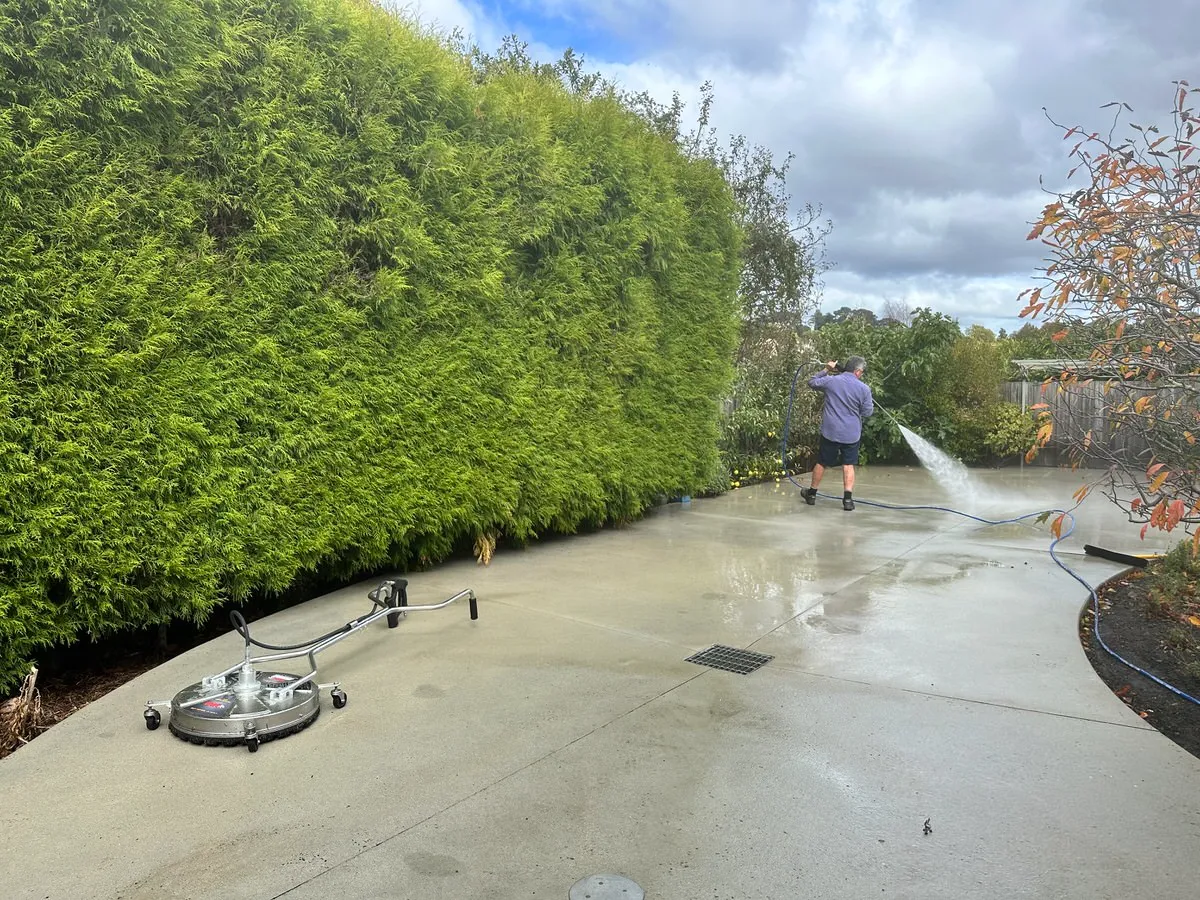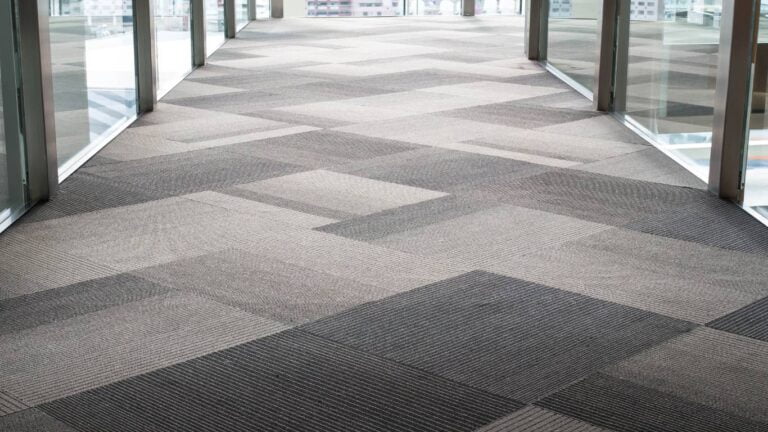High pressure cleaning, known for its powerful stream of water, stands as an indispensable method for tackling stubborn stains and dirt on various surfaces. This technique employs specialised equipment to propel water at high velocities, effectively dislodging and eliminating grime, mould, and other persistent substances. Not only does it enhance the aesthetic appeal of properties by restoring their pristine appearance, but it is also instrumental in preventing structural damage and maintaining a hygienic environment. From residential driveways to sprawling commercial facades, high pressure cleaning offers a versatile and thorough solution for exterior maintenance challenges.
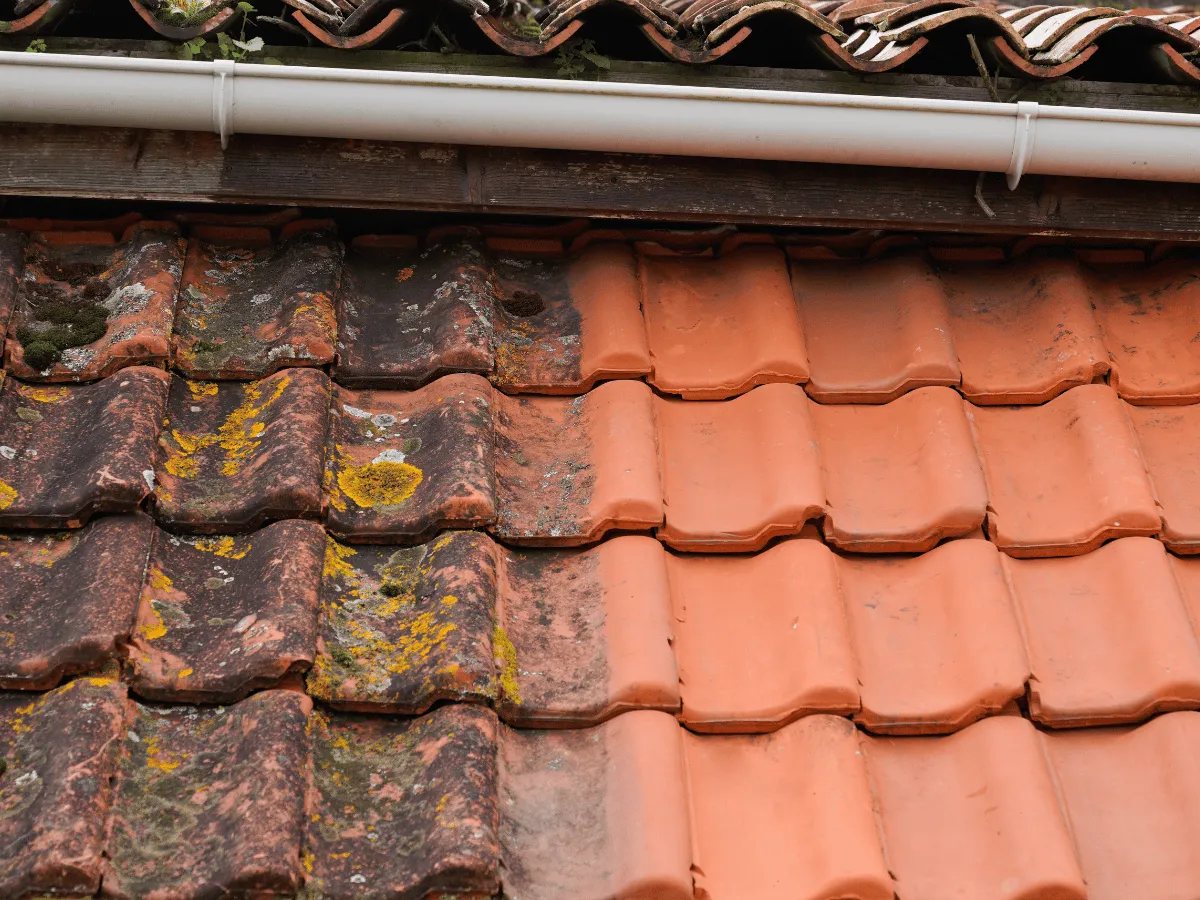
Introduction to High Pressure Cleaning
Defining High Pressure Cleaning
High-pressure cleaning, also known as pressure washing or power washing, is a cleaning method that uses a water spray at high pressure. This technique is effective in dislodging and removing a variety of substances from surfaces, including loose paint, mould, grime, dust, and dirt. The equipment used for this purpose can generate pressures ranging from 750 to 30,000 PSI or more, making it a versatile tool for a wide array of cleaning tasks.
Benefits of High Pressure Cleaning
The benefits of high-pressure cleaning are extensive, impacting not only the appearance of a property but also its safety and structural integrity. By removing potentially harmful substances such as dirt, moss, and grime, high-pressure cleaning prevents these materials from causing corrosion and decay. This maintenance not only protects the property but also avoids costly repairs that might arise from neglect.
Moreover, high-pressure cleaning can significantly reduce health hazards. It eliminates breeding grounds for bacteria and vermin, which are known to carry diseases, and reduces the presence of allergens such as pollen. This creates a safer and healthier environment for those living or working in the space.
Additionally, the aesthetic improvement through pressure washing can enhance curb appeal, which is particularly beneficial for commercial properties where the appearance can influence customer perceptions. For residential properties, the cleanliness achieved through pressure washing can contribute to an increase in market value, making it a cost-effective pre-renovation step or a standalone improvement.
Regular cleaning also mitigates slip hazards by removing slippery substances from walkways and driveways, thereby enhancing safety.
Typical Uses and Applications
High-pressure cleaning is not limited to a single application but is used across various residential and commercial settings. Homeowners use this method to clean gutters, roofs, decks, and other outdoor areas. Businesses apply it to maintain the exteriors of office buildings, educational institutions, and healthcare facilities.
The type of water—hot or cold—used in the process can be chosen based on the cleaning requirements. Hot water is particularly effective for removing grease or oil residues on concrete surfaces, as it helps to emulsify and lift these substances.
The equipment includes specialised nozzles that can adjust the water flow and pressure, allowing for precision in cleaning different surfaces and reaching challenging areas. Surface cleaners are also available to speed up the cleaning of large flat areas. However, you should be cautious when using high-pressure nozzles, especially those that produce a very narrow stream, as they can cause injury or damage if not handled correctly.
Given the potential risks and environmental considerations, such as water usage and the handling of cleaning chemicals, it’s often recommended to hire professional high pressure cleaning services. Professionals have the expertise to select the appropriate pressure levels and cleaning solutions, ensuring effective cleaning without harming the surfaces or the surrounding environment.
They also have the knowledge to operate the equipment safely, avoiding the risk of injury that can come with inexperienced use. If you’re interested in high-pressure cleaning services, getting a quote is typically the first step. This allows you to understand the scope and cost of the service, tailored to the specific needs of your property.
Whether it’s concrete cleaning, brick cleaning, house washing, or commercial building cleaning, regular maintenance through high-pressure cleaning is an investment in your property’s longevity, safety, and aesthetic appeal.
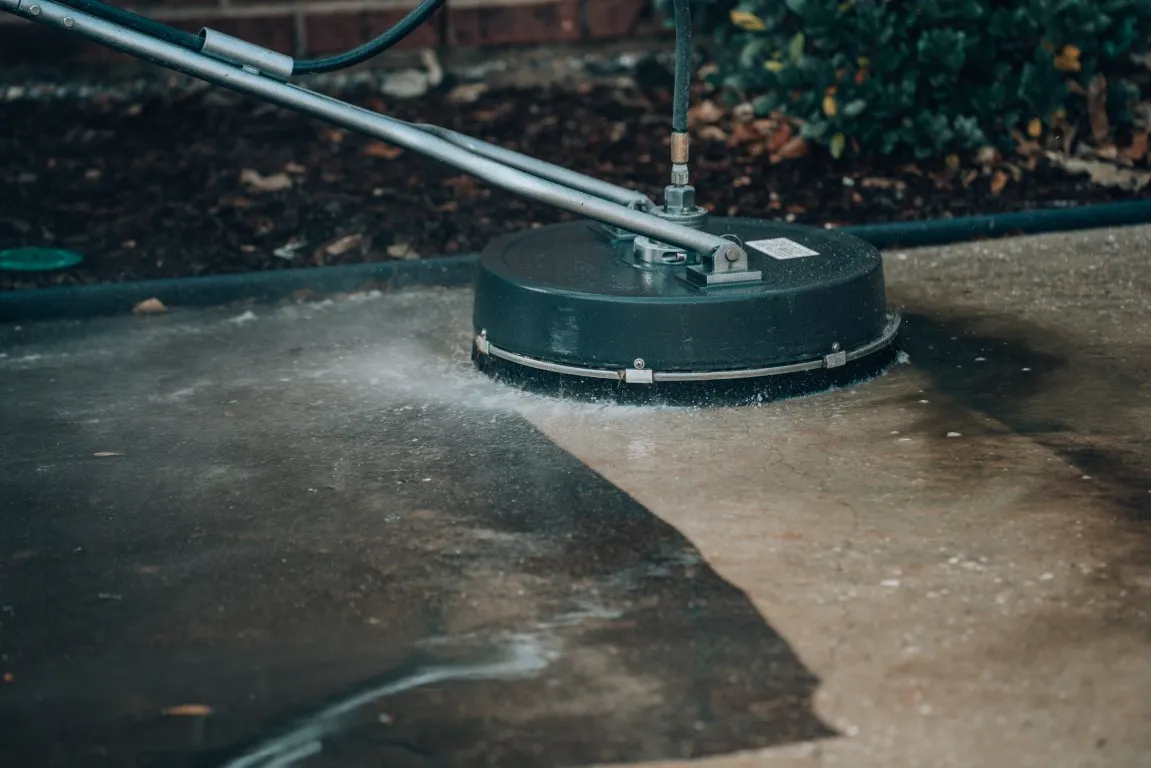
The Mechanics of High Pressure Cleaning
Equipment Involved in High Pressure Cleaning
Central to the operation of high-pressure cleaning is the pressure washer, which consists of a high-pressure hose, a motor, a water pump, and a cleaning attachment such as a gun or lance. The gun channels the water through a nozzle, which can be exchanged to suit the cleaning job at hand.
Nozzles come in various designs, offering different spray patterns and intensities to accommodate diverse tasks. Some pressure washers are equipped with mechanisms that combine cleaning agents with the water, improving the efficiency of the cleaning process. The motor is essential for propelling the pump that produces the high-velocity water stream.
How Water Pressure is Generated
The generation of water pressure is achieved by propelling water through a narrow nozzle, creating a high-speed jet. Plunger-type pumps are commonly employed for their effectiveness and consistent pressure output. Water is stored in tanks before being directed to the pump, where it is then pressurised and sent to the cleaning attachment.
The motor plays a dual role, driving the pump and pre-cooling the water by allowing it to circulate in a double-walled casing around the motor, which dissipates heat. Subsequently, the motor actuates a wobble plate that moves the pistons, resulting in pressurised water.
Safety Measures and Precautions
Due to the potential hazards associated with the intense force of the water, strict safety protocols are imperative. The water jet can inflict severe injuries, necessitating the use of protective gear that can shield against high-pressure water and debris. It is important to ensure that the ground fault circuit interrupter is operational before use.
For those requiring an extension cord, it should be kept clear of water and be appropriate for damp environments. Children should not operate a pressure washer, and any injuries should be addressed immediately to prevent serious complications.
Understanding the metrics of pressure washers, such as Pounds per Square Inch (PSI), is essential for their safe use. These units indicate the machine’s cleaning capabilities and assist in selecting the correct settings for specific jobs. Balancing PSI is important to maintain control over the equipment and minimise the risk of accidents.
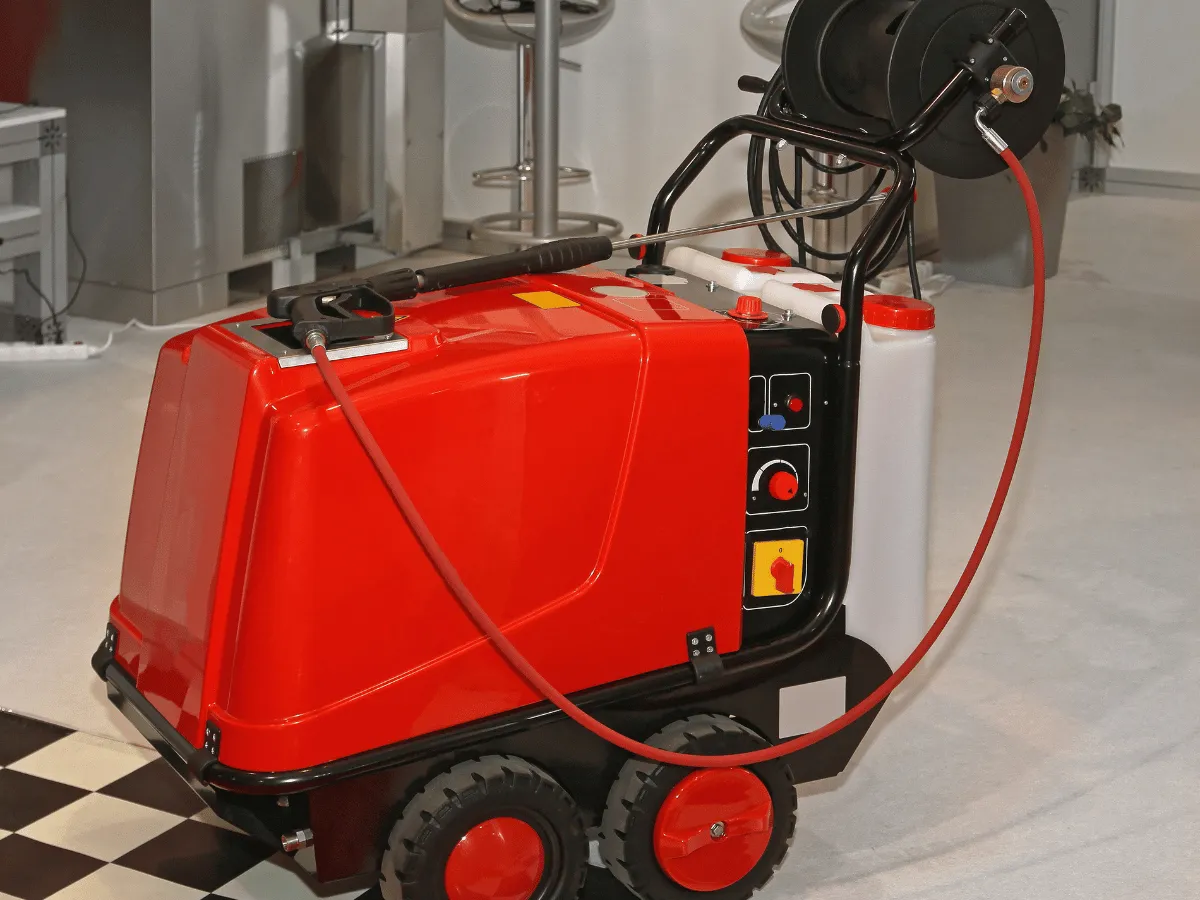
Types of High Pressure Cleaners
Electric vs. Gas-Powered Pressure Washers
Choosing a high-pressure cleaner involves considering the power source. Electric models are less expensive initially and require minimal maintenance. They operate quietly and emit no exhaust, making them suitable for indoor or enclosed spaces.
These units typically generate upwards of 1,300 PSI, sufficient for light-duty tasks. Conversely, gas-powered models begin at 2,000 PSI and can exceed 3,000 PSI, catering to more demanding jobs and professional use. However, they produce more noise, require regular maintenance, and are not recommended for indoor use due to emissions.
The decision between electric and gas-powered models will hinge on the specific cleaning requirements and the environment in which the equipment will be used.
Cold Water vs. Hot Water Pressure Washers
The temperature of the water used in pressure washing is another critical factor. Cold water models excel at removing dirt, mildew, and stripping paint. They are well-suited for a variety of general cleaning tasks and can handle water temperatures up to 65 C.
Hot water models are the preferred choice for cutting through substances like grease and oil. The elevated temperature accelerates the cleaning process, reduces the need for detergents, and can sanitise surfaces. They are particularly effective for cleaning intricate machinery and oily areas.
Stationary vs. Portable Pressure Cleaning Systems
The required mobility of the pressure cleaning system is also a consideration. Portable models, often equipped with wheels, offer the convenience of mobility, allowing for cleaning across different locations. While they may not be the most robust, their versatility is beneficial for residential or smaller commercial tasks.
Stationary models are fixed in place and are designed for continuous use without the need for refilling. They typically offer greater power and are ideal for settings where cleaning is concentrated in a specific area.
For a balance of power and mobility, skid-mounted models are an option. These units can be transported on vehicles or trailers, providing strong cleaning capabilities across various locations. They are adaptable and valuable for businesses that require cleaning services at multiple sites.
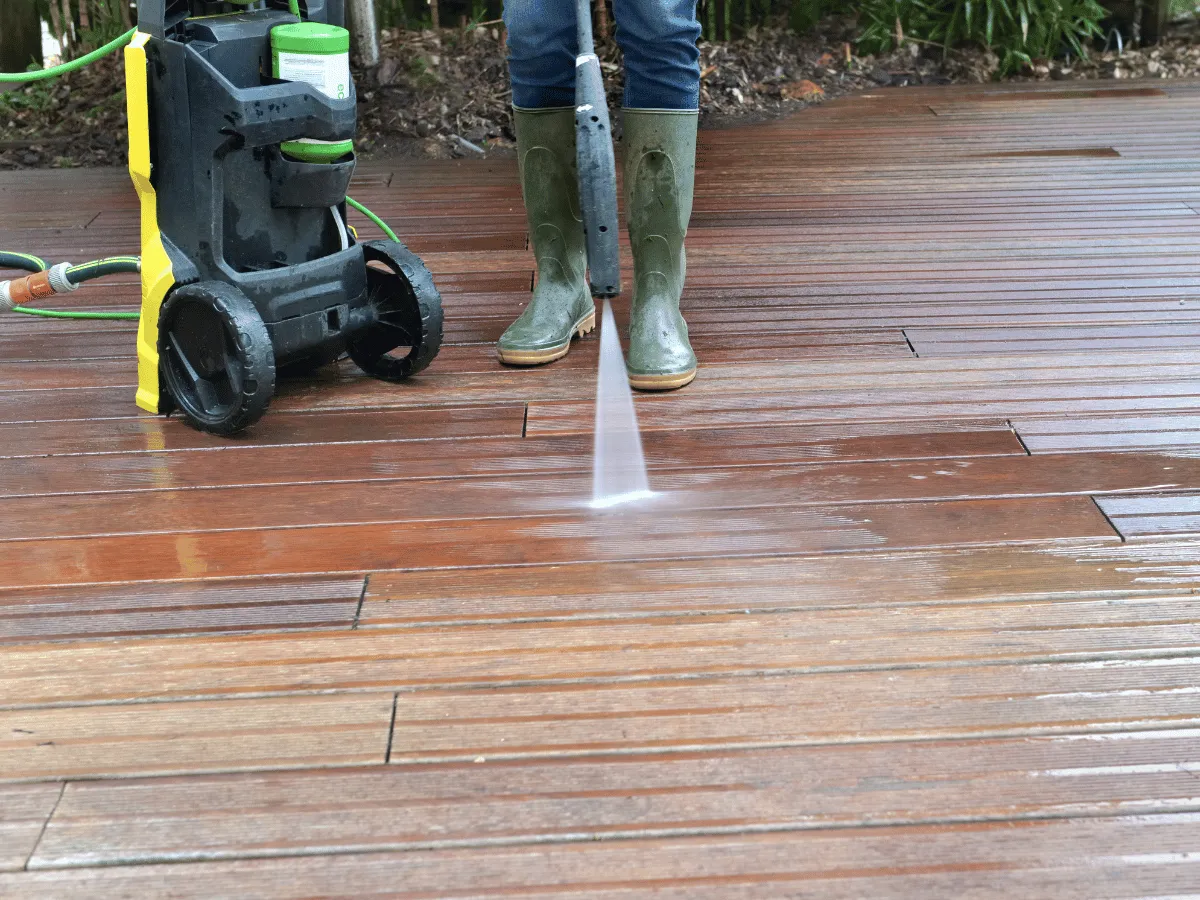
High Pressure Cleaning Techniques
Surface Preparation and Cleaning Methods
Proper preparation of the surface is crucial before commencing with high-pressure cleaning. For brick surfaces, it is essential to repair any imperfections to prevent water intrusion. Pre-wetting the bricks can prevent the absorption of harsh chemicals.
When addressing vinyl siding, a preliminary test on a small section can help determine the appropriate pressure setting to avoid damage. Decks should be cleared of debris and moistened prior to cleaning. Employing a suitable nozzle, such as a 25-degree quick connect nozzle, and maintaining an adequate distance from the surface is advised.
For areas like concrete, it is necessary to relocate any items that could be harmed during the cleaning process. Similarly, when preparing to clean fencing, remove any obstacles and safeguard plants in the vicinity. Detergents should be applied with care, and the surface should be allowed to absorb the cleaning solution for about 10 minutes before a thorough rinse.
Detergents and Cleaning Solutions
Selecting the correct detergent is crucial for an efficient cleaning process. A variety of detergents are available to address different cleaning needs. For brick, a brick-specific detergent should be used, applying it from the bottom upward to avert streaking and allowing it to sit for a short period.
For concrete, a dedicated detergent is recommended, which should be left to act before proceeding with the high-pressure rinse.
Tips for Effective Pressure Washing
For optimal results, it is important to operate the equipment properly. The choice of nozzle impacts the water stream’s angle and force. Nozzles are colour-coded to indicate their spray patterns and pressures. Additional tools such as rotary tips and pressure washing brooms can enhance the cleaning efficiency.
Adhering to safety guidelines is crucial. Protective eyewear and ear protection are recommended, and the wand should be held firmly to control the spray. Environmental considerations are also important; capturing runoff is necessary to prevent pollutants from entering water systems.
Incorporating water and contaminant management into the cleaning process is essential to comply with environmental regulations and avoid penalties. Regular maintenance not only preserves the appearance of properties but also contributes to safety by reducing slip hazards. When seeking professional cleaning services, obtaining a quote ensures that the work is customised to the property’s requirements and conducted by skilled technicians.
Embracing the Power of High-Pressure Cleaning
High-pressure cleaning is a powerful and versatile tool for maintaining the cleanliness and integrity of various surfaces. From residential driveways to commercial facades, this method effectively removes stubborn stains, grime, and other contaminants, enhancing both the aesthetic appeal and safety of properties. With options ranging from electric to gas-powered, and cold to hot water pressure washers, there’s a solution for every cleaning challenge.
Get a free quote for professional high pressure cleaning today.

